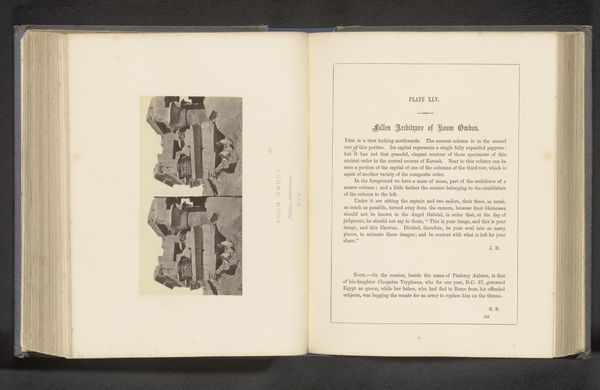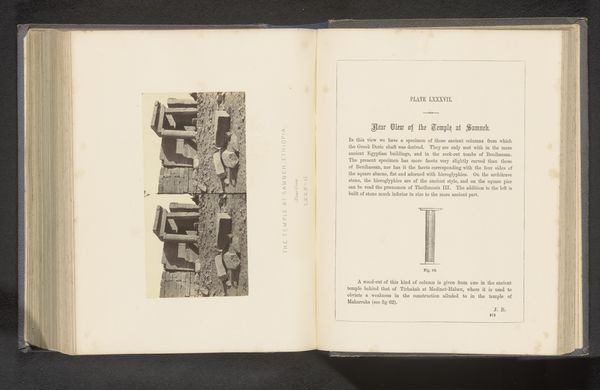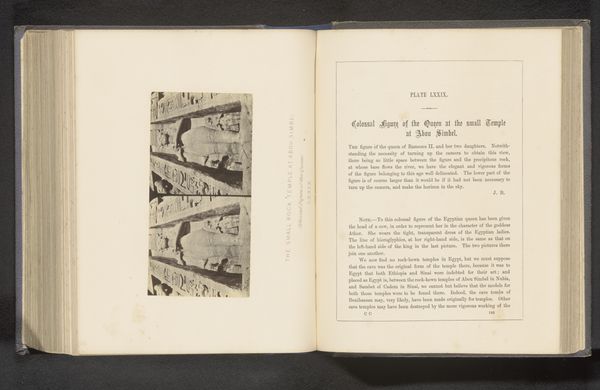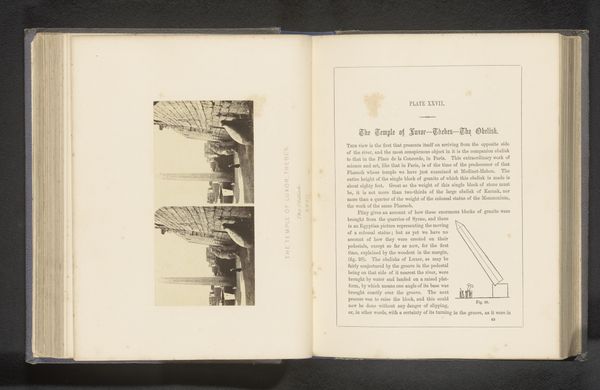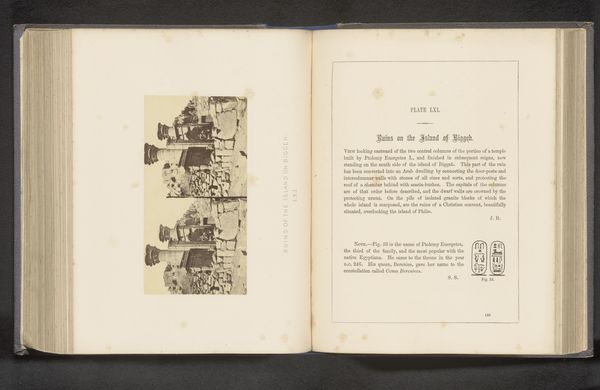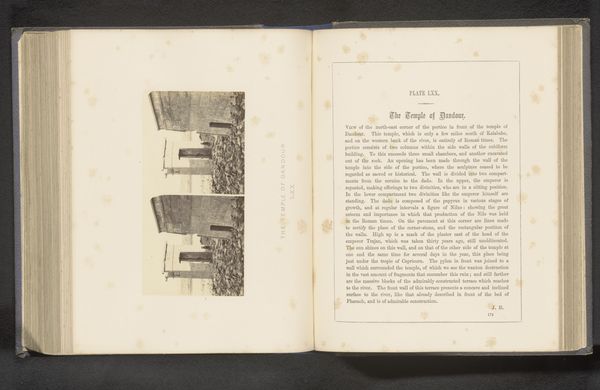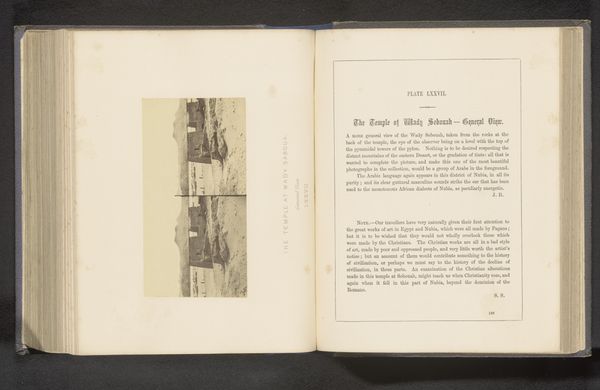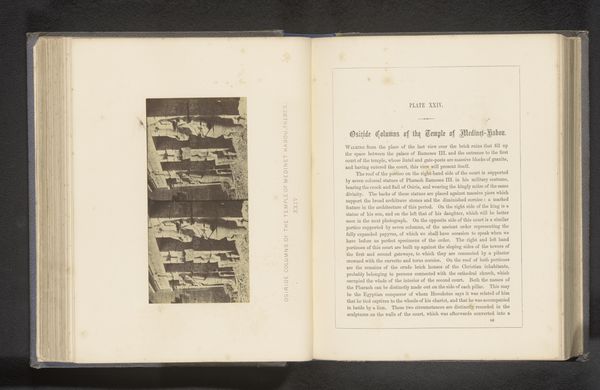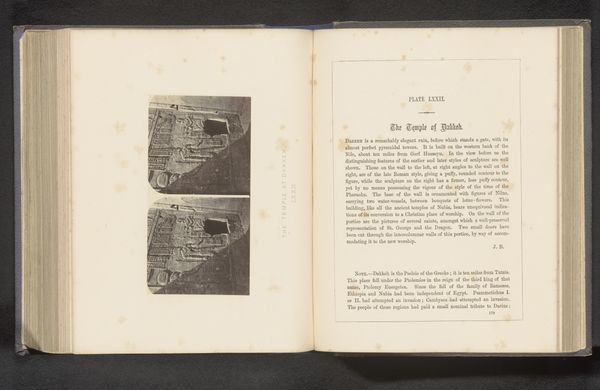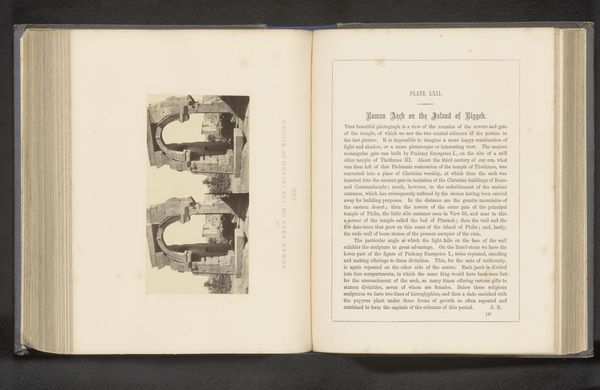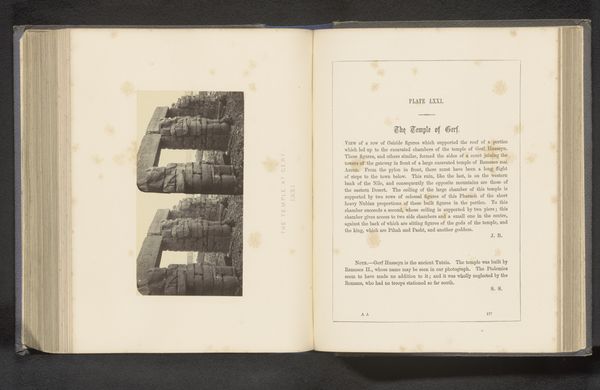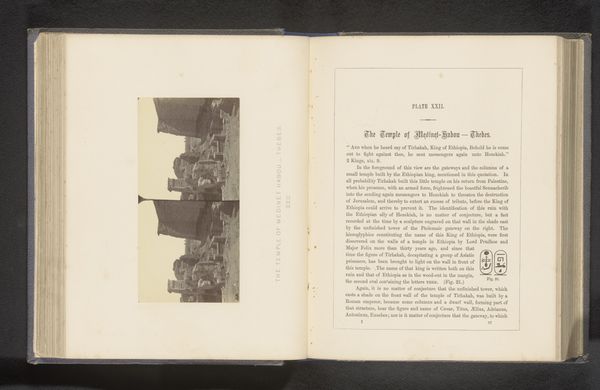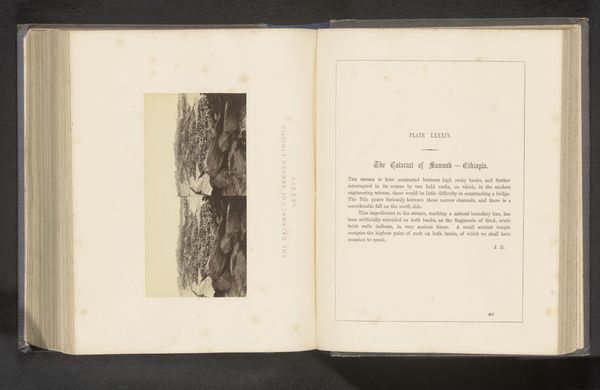
print, photography, architecture
# print
#
landscape
#
ancient-egyptian-art
#
photography
#
ancient-mediterranean
#
architecture
Dimensions: height 74 mm, width 144 mm
Copyright: Rijks Museum: Open Domain
Curator: Here we have a photograph titled "Ruïnes van de tempel van Kom Ombo," or "Ruins of the Temple of Kom Ombo," taken before 1862 by Francis Frith. It resides in the collection of the Rijksmuseum. Editor: My first impression is one of fragmentation. It captures the grandeur of a past civilization, yet the broken, aged materials evoke a profound sense of loss and the ravages of time. Curator: Absolutely. Frith's work often focuses on the architectural and social context of ancient sites. Think about the logistics: the transport of equipment, the processing of images in the field under difficult conditions. He's showing us the labor embedded in these massive structures. Editor: And beyond the labor, consider the cultural significance of Kom Ombo. As a double temple dedicated to two triads of deities, Sobek, Haroeris, and Tasenet in one half, and Haroeris, Takhara, and Panebtawy in the other, its very design is steeped in religious symbolism and cosmic order, rendered even more poignant by its current ruined state. We see the crumbling hieroglyphs—lost languages, lost stories. Curator: The way Frith's choice of perspective also emphasizes the material scale; note the layering of carved stone. This temple’s partial ruin tells the story of shifting powers, resource exploitation, and the natural elements' continuous pressure. It serves as a powerful statement on the ephemeral nature of human endeavor when left without maintenance and care. Editor: Yes, the very style of this landscape highlights our enduring fascination with what remains, despite what is irretrievably gone. Photography helped ignite intense cultural interest in understanding Egyptian belief systems, reflecting how visual artifacts carry emotional and spiritual legacies across continents and centuries. Curator: Ultimately, Frith provides more than just documentation. His work allows us to engage with history as a product of cultural interaction, labor and enduring architectural materiality. Editor: And, as we look, reflect on how symbols transform in meaning. What once conveyed divinity, now conveys mortality, change, and even the passage of faith itself.
Comments
No comments
Be the first to comment and join the conversation on the ultimate creative platform.
